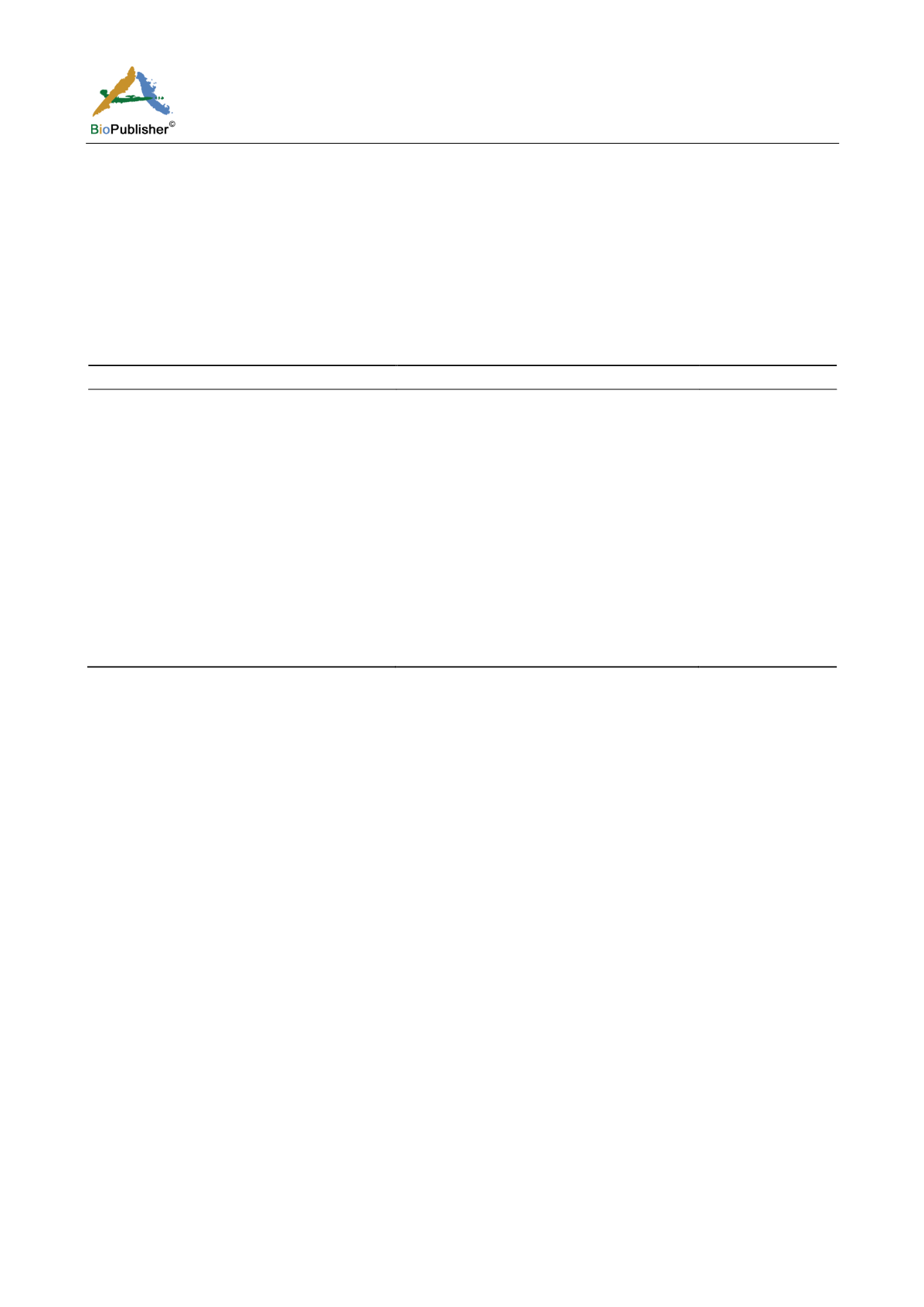
International Journal of Marine Science, 2017, Vol.7, No.34, 344-352
350
seasons as compared to values recorded for different sites, which shows that seasons have immense impact on the
distribution pattern of the species. Similar pattern was observed for many invertebrate fauna occurring in the
tropical waters (Mishra and Kundu, 2005; Trivedi and Vachhrajani, 2014; 2015). The regression study between
different sediment abiotic parameters and abundance of the species revealed that out of all the abiotic parameters
sediment pH showed some impact on the abundance of the species. According to Shuchman and Warbung (1978)
such changes in the abiotic variables of the sediment can influence the distribution of
Ocypode
species inhabiting
sandy shore habitat.
Table 3 Results of the regression analysis between mean seasonal abundance of
O. ceratophthalmus
and mean sediment temperature,
salinity and pH
Sediment Temperature (°C)
Equation
R
2
Veraval
y =0.0498X+1.34
0.007
Sutrapada
y =-0.3221X+14.49
0.19
Dhamlej
y =-0.0794X+6.57
0.011
Kodinar
y =0.1434X+3.98
0.03
Sediment Salinity (%)
Veraval
y =0.0453X+2.68
0.116
Sutrapada
y =0.1797X+3.60
0.065
Dhamlej
y = -0.4411X+21.0
0.482
Kodinar
y =-0.5807X+25.99
0.5624**
Sediment pH
Veraval
y = 1.8861X+17.85
0.394
Sutrapada
y=-4.504X+40.79
0.764***
Dhamlej
y =4.1207X+37.38
0.361
Kodinar
y =-4.4688X+40.79
0.566**
Note: ** p < 0.01; *** p < 0.001
Species in the genus
Ocypode
show changes in the area they occupy in a dynamic way with changes in the
conditions of available space, temperature, pH, salinity etc at each geographic region (Shuchman and Warbung,
1978). Neves and Bemvenuti (2006) have suggested that this response to environmental variables can also include
human impact and proposed the quantification of number of burrows of
Ocypode
species is a rapid tool to assess
anthropogenic impacts on sandy beaches and can be used effectively in environmental monitoring programs. In
the present study, the ecological attributes of
O. ceratophthalmus
varied between different sites. Maximum
density and abundance of the species were recorded at Kodinar followed by Sutrapada, Dhamlej and Veraval. The
population of the species could be affected by the level of the anthropogenic pressure on the sandy shore because
the sandy beach of the Veraval and Dhamlej are affected by high and moderate anthropogenic activities
respectively while the amount of anthropogenic pressure on sandy shore of Sutrapada and Kodinar is
comparatively less (Vaghela, 2010). In the present study, it was observed that burrow construction and
distribution of
O. ceratophthalmus
is highly affected by seasonal variation and abiotic variables of the sediment.
The variation in the distribution of the burrows of the
O. ceratophthalmus
at different sites may be affected by
different variables like the geo morphology of the shore, level of anthropogenic pressure on the shore etc. The
strong correlation between burrow opening diameter and crab carapace width suggested that the burrow
constriction is highly dependent on the body size of an individual. The pattern observed for distribution of
burrows on the different parts of the sandy shore suggested that construction of burrow varies with the life stage
of an individual of the species.
Author’s contributions
Jigneshkumar N. Trivedi and Kauresh D. Vachhrajani carried out the field work for data collection and also performed data analysis.
Jigneshkumar N. Trivedi and Kauresh D. Vachhrajani prepared, read and finalized the manuscript.


